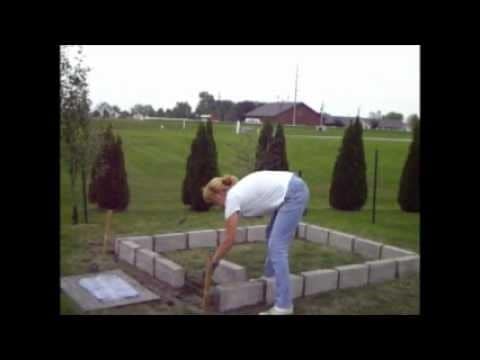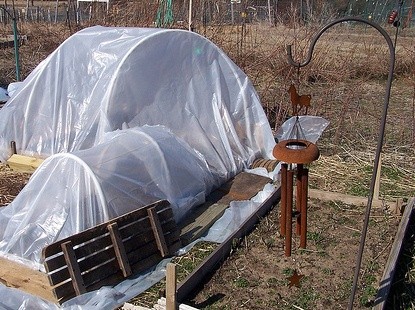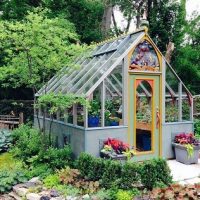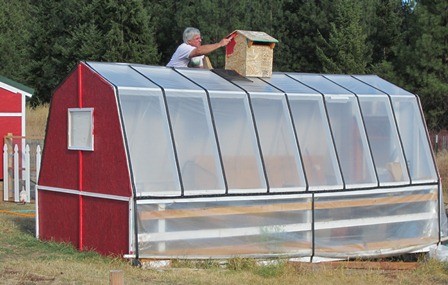How to Build a DIY Greenhouse – Building your own greenhouse is a great step toward self-sustainability and getting out of the mass-supermarket model of food procurement.
When you own a greenhouse, it helps to reduce the impact of the climate in your region, enabling you to grow a greater variety of plants, flowers, and produce.
There are many benefits to building a DIY greenhouse.
First, when you grow your own, it greatly reduces your personal carbon footprint.
In addition, there’s a certain satisfaction in growing and consuming your own food.
You will know where your fruits and vegetables are coming from and can pick them when ripe.
When you grow food in your own greenhouse, you will know it won’t contain harmful pesticides and fertilizers. How to Start a Compost Pile
How to Build a Greenhouse
But, how do you build a greenhouse?
Below we cover the basics, greenhouse plans and some of the best ways to stay as ‘green’ as possible.
DIY Greenhouse Plans

What is a Greenhouse?
A greenhouse is a simple structure with transparent walls and roof (often glass) that houses plants for efficient cultivation.
Greenhouses protect plants from pests and the elements, while naturally letting in sunlight and efficiently conducting heat during warmer months.
In addition to protecting plants from the elements, you can manipulate the environment to suit whatever you are growing.
You can heat or cool the greenhouse to reach the desired temperature.
You can also install plant grow lights to aid certain varieties.
Greenhouses are great for vegetable plots, making the most of the sun while protecting the plants in the process.
What to Consider When Deciding on a DIY Greenhouse
There are certain things you need to consider before choosing and building a greenhouse.
What Kind of Gardener are You?
There are beginner greenhouses for beginner or more casual gardeners.
These are smaller greenhouses which enable you to learn as you grow.
This is going to involve a smaller investment which makes it more practical.
They will take up less space.
In general, you probably won’t invest in plumbing or electricity for a smaller greenhouse.
Experienced and serious gardeners may want a medium or larger-size greenhouse.
These will take up more room as well as cost more.
In larger greenhouses, you may have more needs with a greater variety of plants.
You may want the option to include plumbing for irrigation as well as electricity for HVAC and lighting.
Choose a Suitable Location for building a Greenhouse
Building a greenhouse should be constructed where your garden receives the most light from the sun.
Ideally, this is north or south-facing.
Of course, not all gardens provide consistent levels of sun, but with that in mind, it is better to get morning sun than afternoon sun.
Check to see if any trees, bushes or other structures will block the sunlight.
You might be able to cut down trees and prune bushes to let more light through.
It is also worth remembering that in the winter, the sun has a lower angle and could shine differently on your chosen location than in the summer.
If you do not live in an ideal climate and wish to control heat and ventilation for what you want to grow, you will also need to be in a location that can receive a power supply.
In addition to the sunlight, there is another consideration when determining location: drainage.
Greenhouse Drainage
You will need to build the structure on a stable surface that is well drained.
The greenhouse itself will also need to have a basic drainage system to divert excess rainwater.
You could do this with a shallow ditch or build on a natural high point.
You could also use rain collectors or build a cistern to collect the rainwater.
The latter is more eco-friendly as you can use this water for your plants instead of it running off.
This is particularly important in certain regions.
Greenhouse Frame
Everything you need for a smaller greenhouse you can purchase in a kit.
The instructions will be fairly straightforward.
It is also worth visiting a local garden-center or home-improvement store to see what they have to offer.
You may also want to build a DIY greenhouse.
These typically use 2×4’s, PVC pipe, and greenhouse plastic.
Tip 1: Use locally-sourced materials wherever you can
Depending on what you choose, the cost can range from a few hundred dollars to several thousand.
The first and most important step is to measure your chosen spot and decide how big you want your greenhouse to be.
After that, consider your budget.
Next, decide if you will purchase a greenhouse kit or buy the materials and build the greenhouse yourself.
The most common size for a personal greenhouse is 6 x 8 feet.
The frame can be wooden, aluminum, steel, or PVC plastic.
Unless you have experience or the desire to learn, it may be better for you to buy a plan you can follow or employ a professional.

Tip 2: Utilize a ‘lean-in’ (using an existing wall as support for one side of the new structure).
If you are able to locate your greenhouse in an area with an existing wall, you will be able to reduce construction costs. In addition, you will provide additional heat.
The process is similar to extension conservatory on a house.
Tip 3: Treat the wood so it lasts.
Ask in your area the best wood for a greenhouse. Know that not all common wood treatment is safe for cultivating food.
Greenhouse Covering
The main concept for greenhouse walls and roofs is to let the sunlight in and hold the heat.
If you can afford it, glass is the best option to cover your greenhouse.
It is sturdy, doesn’t need to be replaced for many years — providing there are no flying baseballs — and holds the heat well.
If you want to use a less expensive material, you can consider tarp.
We recommend UV-stabilized LDPE plastic.
The greenhouse roof and covering will provide consistent effects from the sun.
If buying a kit, you should check that the covering is not basic polyethylene, which contains BPA’s.
You want to ensure all the materials for the greenhouse are non-toxic.
While fiberglass is also an option, it will lose its transparency after a few years and go yellow, forcing you to replace it.
Greenhouse Cooling, Heating and Ventilation
Basic home greenhouses do not necessarily require sophisticated ventilation and temperature systems.
Fans can be costly and waste energy.
Using vents and/or propping a window or door open can be sufficient.
The idea is that all of your plants get air (carbon dioxide) to photosynthesize.
That means fresh air needs to get in and circulate.
If your greenhouse is on the larger side, one option is to use a solar-powered fan system to keep your energy consumption eco-friendly.
This also applies to greenhouse heating systems.
All that said, a few electric-powered fans will still be better for your carbon footprint than buying all of your food from a supermarket.
You will also require basic thermometers so you can gauge the temperature of your greenhouse as well as to enhance and maximize the growing environment. The next step up is a digital thermostat.
Planning the Greenhouse Interior Layout
Another consideration is the greenhouse interior.
Think about the space inside the greenhouse.
Where will the plants go?
You will need benches, tables, and/or troughs to stand and hold your plants.
You may also want to incorporate a space on the ground for plants in pots.
Depending on the soil and other factors, you may want to also cultivate the land itself into planting beds.
Many home gardeners use a combination to maximize their greenhouse layout.
Factor in water systems
It will also be important to consider if and where you will have irrigation or incorporate hydroponics into the greenhouse space.
Remember you will need to allow water drainage and space for you to work between rows of plants, no matter how you design your interior.
Space for gardening tools
In addition, if possible, plan for an area you can store your gardening materials. We highly recommend this!
You will want your shovels, trowels, gardening gloves, shears, extra pots, and everything you need right in the greenhouse.
It will save you steps, protect your gardening equipment, and make everything much more convenient.
How will you get water to your greenhouse?
In addition to planning for water drainage, you need to think about how you will water your plants.
An ideal situation is to use the rainwater you collect to water your plants.
There are various sized tanks to collect runoff water from your home, garage, shop, etc. You can start with using a rain barrel.
Water harvesting is when you capture and then collect the rainwater to use for landscaping, gardens, trees, plants, etc., instead of using water from the faucet/hose.
(We have a 2,500 gallon tank. It’s incredible how fast it fills up in a rainstorm.
At first we were hesitant to use the water, but we learned quickly to use it so we can collect water from the next storm.)
The closer your greenhouse is to your cistern, the more convenient this will be.
If you aren’t able to use rainwater you harvested, be sure to have a way to use a hose from your home water supply.
Tip: To fertilize your plants, use your own compost.
A compost heap is a freestanding heap or container of organic matter, such as food and garden waste, that you collect and allow to decay.
It reduces waste going to landfill.
Therefore, it’s another way to reduce your carbon footprint.
In addition, your soil will be richer.
EarthEasy for a complete guide on the best compost sources.
Building a Greenhouse
While you might face some unique challenges or have your own unique requirements, the above steps will get you on the right track to building a greenhouse.
It is a fun and challenging process to grow your own flowers, food, and plants, but you will soon get the hang of it.
Do you already grow food from your own greenhouse or a collective? Best Backyard Greenhouse
Let us know your experiences in the comments below. What size did you choose and why?

How to Build a Greenhouse - Building a Greenhouse - DIY Greenhouse
DIY Greenhouse
Building your own greenhouse is a great step toward self-sustainability and getting out of the mass-supermarket model of food procurement. When you grow your own, it greatly reduces your personal carbon footprint.
Greenhouses are great for vegetables, making the most of the sun while protecting the plants in the process. You will know where your fruits and vegetables are
coming from and can pick them when ripe. When you grow food in your own
greenhouse, you will know it won't contain harmful pesticides and fertilizers.
Instructions
How to Build a Greenhouse
- Greenhouse Plans ~ What Kind of Gardener are You? This determines size.
- Choose a Suitable Location for Your Greenhouse.
- Plan the Greenhouse Interior Layout for planting, infrastructure and tools.
- Greenhouse Watering and Drainage system.
- Greenhouse Material, Frame and Covering.
- Greenhouse Cooling, Heating and Ventilation.
Greenhouse Plans
Tip 1: Use locally-sourced materials wherever you can
Tip 2: Utilize a ‘lean-in’ (using an existing wall as support for one side of the new structure).
Tip 3: Treat the wood so it lasts.
Tip 4: To fertilize your plants, use your own compost.
Notes
Building a Greenhouse
While you might face some unique challenges or have your own unique requirements, the above steps will get you on the right track to building your own greenhouse. It is a fun and challenging process to grow your own flowers, food, and plants, and you will soon get the hang of it.

